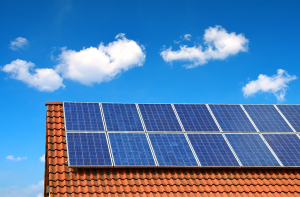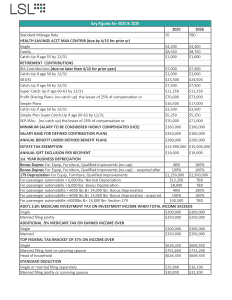Passed on August 16, 2022, the Inflation Reduction Act of 2022 replaces President Biden’s proposed Build Back Better Act of 2021. Government revenue will be raised by greatly increasing the IRS budget and by imposing a 15% minimum tax to corporations with income in excess of $1 billion for the 3 prior tax years. We have recapped below some of the items more likely to affect businesses and individuals.
Items Affecting Individuals
- The Solar Credit has a new name: the Residential Clean Energy Credit. This increases to 30% immediately for 2022 through 2032, then drops to 26% in 2033 and 22% in 2034. Remember the system must actually be placed in service in order to receive the credit.
- Energy Efficient Home Improvement Credit – The limited credit which expired in 2021 is revived for 2022. And beginning in 2023, a much-expanded credit of 30% of the cost of all eligible home improvements will apply, with an annual $1200 cap on the credit amount, and limitations within specific improvement types (e.g., $250 for an exterior door; $600 for exterior windows and skylights, central air conditioners, electric panels, natural gas, propane or oil water heaters).
- The Premium Tax Credit for taxpayers who purchase their medical insurance on their state exchange will be extended for three years, through 2025.
- Prescription drug caps for Medicare recipients -The Inflation Reduction Act grants Medicare the ability to negotiate the price of certain drugs and also caps out-of-pocket prescription costs for Medicare recipients at $2000 per year starting in 2025.
- Clean Vehicle Credit
- Effective immediately, the tax credit will apply only to qualifying vehicles with final assembly occurring in North America.
- Beginning January 1, 2023 the credit will be available only to taxpayers with taxable income below $150,000 ($300,000 married filing joint, $225,000 head of household). The limit on the number of vehicles produced by a specific manufacturer will be lifted, meaning that Teslas and Toyotas can qualify again. The credit will apply only to sedans costing no more than $55,000 and pickups, vans or SUVs costing no more than $80,000. The credit remains at $7500 for qualifying new vehicles.
- Pre-owned vehicles may qualify -Starting in 2023 a credit of the lesser of $4000 or 30% of the auto’s price will apply to pre-owned clean vehicles whose purchase price is no more than $25,000. The taxpayer’s taxable income cap for this pre-owned credit is cut in half at $75,000 for singles ($150,000 married filing joint, $112,500 head of household).
- Beginning in 2024 car buyers will be able to transfer the credit to dealers at the point of sale, so that the purchase price is directly reduced. We caution you not to do so, as any overpaid credit will be owed back upon the filing of your tax return and that could be a painful exercise.
- Excess business loss deductions for individuals will be limited for an additional 2 years, extended now through 2028. This limitation allows a taxpayer to use only up to $270,000 ($540,000 for married filing joint) of losses from passthrough entities to offset other non-business income, such as wages and investment income. Any unused passthrough losses will be suspended and carried forward to future years. Passthrough business losses can still offset other business income without limitation.
Items Affecting Businesses
- The amount of Research Credit available against payroll taxes will be doubled from $250,000 to $500,000 for qualifying small businesses for years after 2022.
- The Energy Efficient Commercial Buildings Deduction (179D) – For builders of energy efficient commercial buildings that are 4 stories or taller, the maximum deduction has increased from $1.88 per square foot to $5.00 per square foot. Energy efficient retrofits of older buildings will also be eligible.
As always, we’ll keep you posted with any new developments. In the meantime, if you are interested in tax planning or have any questions on how this impacts you or your business, contact us.




